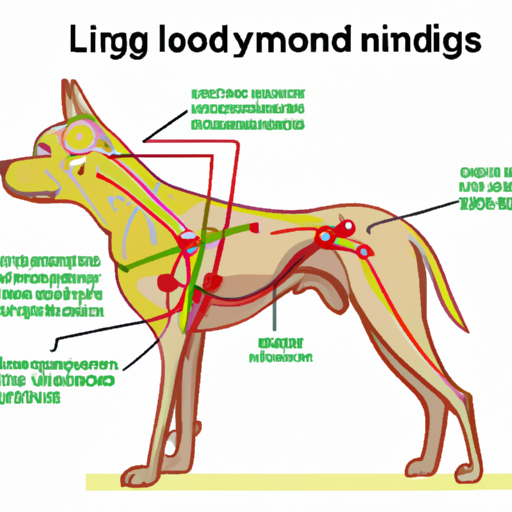Introduction
You see them as more than just pets. They’re family, the ones who bring joy and love into your home. And as a caregiver, you want to do everything you can to ensure their health and well-being. This is why understanding their anatomy, specifically their lymph nodes, is crucial.
Understanding Lymph Nodes in Dogs
Just like in humans, your dog’s lymph nodes are an essential part of their immune system. They act as a filter for harmful substances, producing special cells called lymphocytes that fight off infections and diseases.
Dogs have approximately 500-600 lymph nodes spread throughout their body. However, as a caregiver, there are certain ones that you should be aware of:
- Submandibular Lymph Nodes: Located under the jaw, these are often the first to swell in response to mouth and throat infections.
- Prescapular Lymph Nodes: Found in front of the shoulder blades, these nodes drain the head, neck, and front legs.
- Axillary Lymph Nodes: These nodes are located in the armpit area and drain the chest and front legs.
- Inguinal Lymph Nodes: Located in the groin area, these nodes drain the hind legs and lower abdomen.
- Popliteal Lymph Nodes: Situated behind the knee, they drain the lower leg and foot.
How to Check Your Dog’s Lymph Nodes
Detecting issues early is crucial, and you, as a caregiver, can play a pivotal role by performing regular checks on your dog’s lymph nodes.
- Step 1: Calm your dog down and get them into a comfortable position.
- Step 2: Use your fingers to gently feel the areas where the lymph nodes are located.
- Step 3: Pay attention to any swelling, hardness, or pain that your dog may show.
What Swollen Lymph Nodes in Dogs Mean
Swollen lymph nodes in dogs, also known as lymphadenopathy, can indicate several health issues, ranging from infections to cancers like lymphoma. If you notice any swelling, don’t panic. Consult your vet immediately for a proper diagnosis.
Here’s a simple table to illustrate the potential causes:
| Swelling Location | Potential Causes |
|---|---|
| Submandibular | Dental diseases, mouth infections |
| Prescapular | Upper respiratory infections, skin infections |
| Axillary | Chest infections, heart diseases |
| Inguinal | Urinary tract infections, reproductive organ diseases |
| Popliteal | Foot and leg infections, allergies |
FAQs
Q1: How often should I check my dog’s lymph nodes?
A1: As a general rule, you should check your dog’s lymph nodes at least once a month.
Q2: What are the signs of lymphoma in dogs?
A2: Look for symptoms like lethargy, loss of appetite, weight loss, and unexplained lumps.
Q3: Should I be worried if my dog’s lymph nodes are slightly swollen?
A3: Not necessarily. However, if the swelling persists or is accompanied by other symptoms, consult your vet.
Q4: Can dogs recover from swollen lymph nodes?
A4: Yes, depending on the underlying cause, dogs can recover with appropriate treatment.
You are the first line of defense when it comes to your dog’s health. As a caregiver, your love and attention can make all the difference. Stay vigilant, stay informed, and remember that when in doubt, always consult with a professional.



